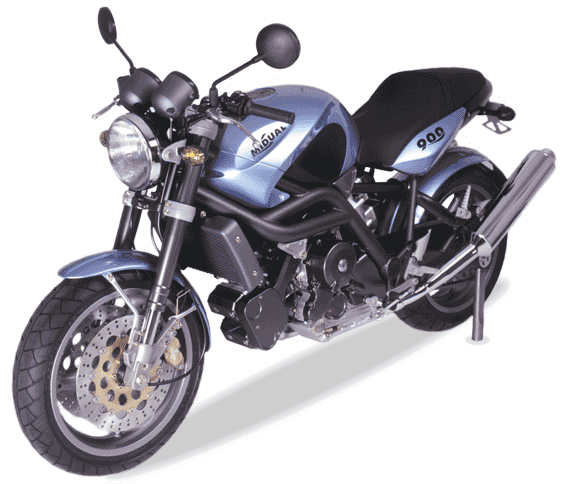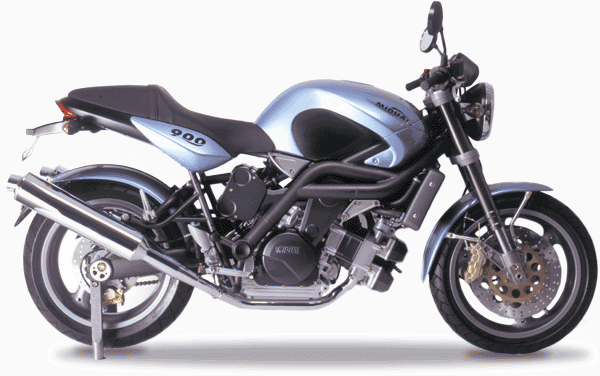
Ninety degree V-twin sportbikes are all the rage these days. Ducati, Honda, Suzuki and others are building these bikes, and at least one engineering problem associated with this design has become common knowledge. When a ninety degree V-twin is placed in a sportbike chassis, “packaging” becomes difficult. The engine configuration makes it almost impossible to include (1) a normal rear suspension system, and (2) a modern, long swingarm (a design element which is a major contributor to the superb handling of Yamaha’s new R1, for instance).
Suzuki addressed the rear shock absorber placement issue by redesigning the shock altogether — it utilizes a rotary damper design. Aprilia, in designing its RSV1000, disgarded the ninety degree concept (despite its natural balance) in favor of a narrower V angle. Aprilia decided that the narrower V angle far outweighed the advantages of a ninety degree V-twin simply because the packaging of the motor was so important. The narrower angle of the V allowed Aprilia to have both a normal rear shock placement and a long swingarm (with added weight over the front wheel).
Why am I discussing the problems associated with ninety degree V-twins in this article? Good question. If you think it’s hard to package a ninety degree V-twin in a modern, competent-handling motorcycle chassis, try packaging a flat-twin mounted lengthwise in the chassis (opposite the approach used by BMW with its flat twin). Look at the pictures in this article and you will see what I mean.

In studying the Midual, I learned that an English firm named Douglas was first to use a flat twin (before BMW) in a motorcycle. Moreover, Douglas aligned the flat twin parallel with the frame, as does Midual. The Douglas flat twin was popular in the 1920s and 1930s, but actually stayed in production until 1960.
Since 1960, no flat twin alligned with the chassis has been manufactured anywhere in the world. Midual intends to change that.
The owners and designers behind Midual feel it is important, essential even, to develop a bike with a unique engine. A unique engine design, to some extent, puts you in a nitch all alone — without competitors. I will grant Midual this fact, but are there genuine engineering and performance reasons for the design? Or is the tail wagging the dog?
According to Midual, there are reasons beyond marketing for the design and layout of the engine. The 900cc flat twin employed by the Midual roadster purports to contribute to a lower center of gravity, light weight, and simplicity. It also puts out respectable horsepower for a 900cc twin (90 hp). With fuel injection and a five-speed gear box, the Midual roadster will have more than adequate performance. But buyers of the Midual (should it ever see production) will not be looking for performance alone – they will want character. They will find it in the Midual.
The story of Midual could take several pages, but let’s just say this. Olivier Midy and his brother Francois combined passion, skill and insight to create the Midual concept. Years (four years to be exact) of design and engineering went into this single roadster. Finally, with the basic engineering done, the Midys contracted with English designer Glynn Kerr to complete the look of the roadster. Kerr is a substantial motorcycle designer, having worked for Honda and other major manufacturers.
Apparently, having recognized the effort of the Midys and Glynn Kerr, investors are now putting up the funds to create a running prototype and, hopefully, start-up of production. This bike is a long way from being available at your local motorcycle dealer, however.
Given the effort and the passion already displayed by the Midy brothers, we expect this bike will be a reality in a few years time. For now, it is an entirely unique design which makes all of us think about the possibility that other engine configurations exist that have been overlooked by the mainstream motorcycle manufacturers.





